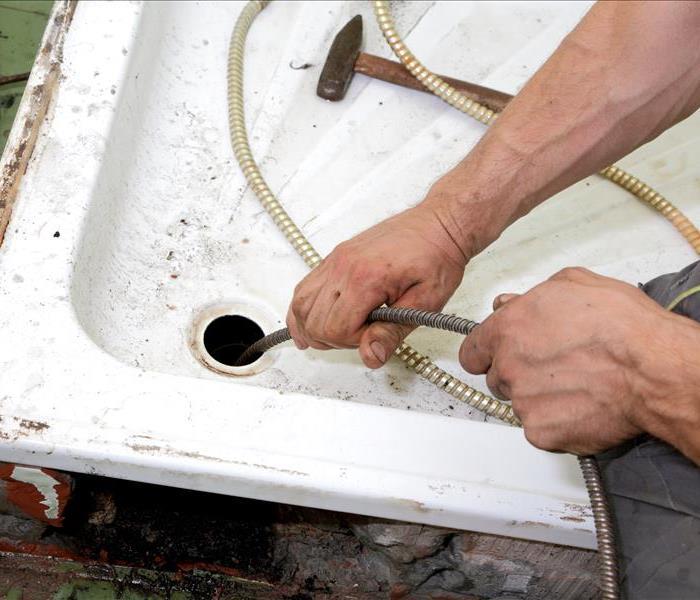How To Clean Sewage Backup
5/28/2021 (Permalink)
Not only is a sewer backup disgusting, but it is also a serious health hazard. Cleaning one up is no laughing matter. It is something that takes time, patience and a bit of know-how. Here are some things that you can do if you've had a sewage backup in your home.
4 Tips to Clean Sewage Backup in Your Home
Turn Everything Off
A sewage backup or leak is essentially a flood. You should turn off and unplug any appliances or electronics in the area. If you can't do this safely, turn off the main electricity to the house. Items to watch for when it comes to electricity and flooding are:
- Hairstyling tools in the bathroom
- Appliances
- Lights that plugged in or are wired into the wall
- Heaters
These items might get missed in the effort to clean up.
Safety First
Before removing any sewage, think of your safety. Wear goggles, a mask and protective clothing. Contaminated water is dangerous, and you don't want any to get on you. Even a simple sewer backup can be harmful. If you are not sure, call a professional sewage cleanup company in White Bear Lake, MN, to help.
Remove the Sewage
If you have already located and corrected the backup's source, it is time to get rid of the mess. Removing the sewage is one of your first steps in cleaning up. You can do this with a wet/dry vacuum. It may be tempting to rinse the waste down, particularly if the problem is a bathtub backup where it is relatively easy to do. Don't do this. Sewage can harden in drains and cause you even more problems.
Clean the Area
Once the sewage is gone, use a disinfectant to clean the area. Do not just use soap and water. You need something that will kill bacteria and other microbes to be safe. Throw out any rags or sponges, so you don't use them for anything else.
A sewer backup can be a serious problem if you don't know how to handle it. When you have a sewer problem, just take it one step at a time and remember to clean the area thoroughly.

 24/7 Emergency Service
24/7 Emergency Service
